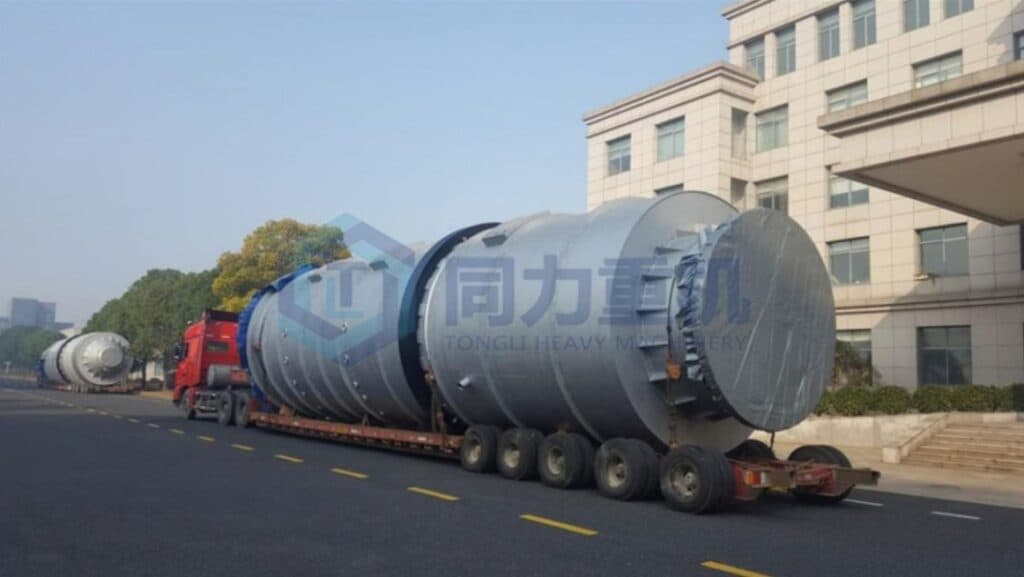Slurry Spray granulation VS ammonia granulation

Introduction:
Spray granulation is a process used in the fertilizer industries to convert ingredient or components is atomized into fine droplets. These droplets are then brought into contact with a drying medium to form solids. Ammonia granulation involves converting gaseous ammonia into solid granules. So in this article we are going to present the difference between these 2 method by FAQ format.
What is the main difference between spray granulation and ammonia granulation?
- The main difference between shotcrete granulation and ammoniated granulation is the granulation method. Shotcrete granulation is a process in which the self-granulated particles form a material curtain in the form of returned material, which is combined with the sprayed slurry and coated layer by layer. Granulated.
- In ammonia granulation, a certain amount of gas ammonia must be introduced into the drum to continue neutralization and generate heat to evaporate and take away part of the water. Its granulation method is mainly bonding and granulation.
Are the moisture contents of spray granulation and ammonia granulation the same?
- Although the processes are very similar, the moisture content of the slurry entering the granulator is different between the two. Shot granulation is generally about 30%, while ammonia granulation is generally about 15%. High-tower granulation is mainly the melting and granulation of materials. The moisture content of the materials is very low, about 2%. The granulation method is self-granulation. Generally, the nitrogen content is very high, generally above 20%, so it is instant and quick-acting.
The difference between ammoniated granulation and spray drum granulation:
Question#1:
Compared with ammonia granulation and spray granulation, does it mean that the neutralization reaction is carried out in a tubular reactor for the first time, and then the shot granulation goes directly to the granulator, while the ammoniation granulation Is gas ammonia added to the drum granulator for the second neutralization reaction? That is to say, ammonia granulation is a neutralization reaction of adding gas ammonia twice, while shot granulation only adds a neutralization reaction of gas ammonia once?
Answer#1:
- Yes, It can be understood that ammoniated granulation can be neutralized once or twice. However, the degree of neutralization of the slurry and ammonia between spray granulation and ammoniated granulation is different. Ammoniated granulation The degree of neutralization of the particles is higher, which means the degree of acid-base reaction is deeper.
- Because the temperature of the slurry for shotcrete granulation is generally only about 110 to 120 degrees, while the temperature of the slurry for ammoniated granulation is generally between 220 to 280 degrees, which is much higher than that of shotcrete granulation.
Question#2:
Does ammoniation granulation have a higher degree of neutralization than shotcrete granulation, which means that more ammonia gas is added in the ammoniation granulation process? Is it just the neutralization process, or are the two processes actually just ammoniated granulation adding more ammonia?
Answer#2:
- It cannot be said that, although it seems to be the case on the surface, since the temperature, moisture content and composition of the two slurries are very different, the granulation properties of the slurries are also different, so the granulation methods are also different. .
- The main difference between shotcrete granulation and ammoniated granulation is the granulation method. Shotcrete granulation is a process in which the self-granulated particles form a material curtain in the form of returned material, which is combined with the sprayed slurry and coated layer by layer. Granulated.
- During ammoniation granulation, a certain amount of gas ammonia must be introduced into the drum to continue neutralization and generate heat to evaporate and take away part of the water. Its granulation method is mainly through bonding and granulation.
Conclusion:
To summarize, we have used a new format in this article, using the form of FAQ to answer the differences between slurry spray granulation and ammoniated granulation and what are the differences. If you like it, we can write more popular science articles in this form in the future.

